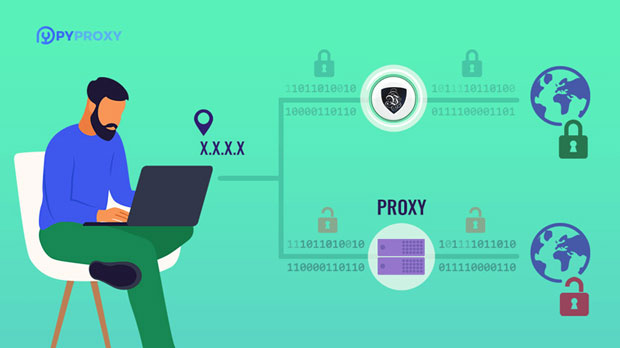Security differences between SOCKS5 proxy and HTTP proxy?
When discussing proxies, SOCKS5 and HTTP proxies often come up as two primary types. These proxies serve distinct purposes, and their security features differ significantly, making it essential to understand how each can impact the protection of data and online privacy. SOCKS5, a more versatile proxy, is known for handling a wider range of internet protocols and providing robust anonymity, while HTTP proxies are often used for specific web browsing needs but may lack the same level of security. This article will explore the security differences between these two types of proxies in detail, helping users make informed decisions based on their security and privacy needs. What is socks5 proxy?SOCKS5 is the latest version of the SOCKS (Socket Secure) protocol, designed to handle various types of internet traffic, including HTTP, FTP, and others. It is a lower-level proxy compared to HTTP proxies, which means that it works on a broader range of applications. socks5 proxies are widely praised for their ability to handle all kinds of traffic, making them highly flexible and suitable for a variety of online activities, from web browsing to gaming and file sharing. When it comes to security, SOCKS5 does not inherently encrypt traffic, but it allows users to connect securely by tunneling traffic through secure channels.The real advantage of SOCKS5 lies in its ability to provide more anonymity and flexibility compared to HTTP proxies. It does not modify the data packets like HTTP proxies do, meaning users experience less interference and can pass through firewalls and other network barriers more effectively. It is important to note that while SOCKS5 can be used securely with encryption, the protocol itself does not provide encryption by default.What is HTTP Proxy?HTTP proxies, on the other hand, are designed specifically to handle HTTP traffic. These proxies are commonly used for web browsing and help route HTTP requests and responses between a client and a server. HTTP proxies are typically easier to configure and use than SOCKS5 proxies, especially for basic tasks such as web browsing. However, their functionality is more limited since they are tailored to just one type of internet traffic: HTTP.Security-wise, HTTP proxies usually lack encryption by default. They act as intermediaries between the client and the server, and while they can mask the user's IP address, they do not necessarily provide strong privacy protection. Data transmitted through HTTP proxies can often be intercepted, and any sensitive information sent over an HTTP connection can be vulnerable to attacks if not secured via additional encryption mechanisms, such as HTTPS.Security Features: SOCKS5 vs HTTP Proxy1. Encryption One of the most significant security differences between SOCKS5 and HTTP proxies is the way they handle encryption. SOCKS5 does not provide built-in encryption; however, it is compatible with other security tools and protocols, such as SSL or TLS, to encrypt traffic. This flexibility allows users to combine SOCKS5 with encryption methods, providing an additional layer of security. On the other hand, HTTP proxies do not offer any encryption by default. They are generally transparent to the data passing through them, meaning that sensitive information transmitted via an HTTP proxy may be exposed to third parties.2. Traffic Handling and Anonymity SOCKS5 offers superior anonymity and privacy compared to HTTP proxies. Since SOCKS5 operates at a lower level (the transport layer) and does not alter the data packets, it ensures that data is passed through with minimal modification. This is crucial for users who require a higher degree of privacy, such as individuals involved in secure communications or those attempting to bypass internet censorship. HTTP proxies, however, process requests at the application layer, which means they can modify HTTP headers and even log user behavior. While they can still hide the user's IP address, they provide a lower level of anonymity compared to SOCKS5 proxies. The risk of data leakage is higher, particularly when using unsecured websites or services.3. Compatibility and Flexibility SOCKS5 is far more flexible than HTTP proxies because it can handle a wide range of protocols. It is not limited to just HTTP or HTTPS traffic; it can route FTP, POP3, SMTP, and other types of data. This makes SOCKS5 a suitable choice for users who need to route different types of traffic securely. Additionally, SOCKS5 supports both UDP and TCP traffic, making it suitable for real-time applications like video streaming or gaming. HTTP proxies are more limited in comparison, only supporting HTTP and HTTPS traffic. This means that they are primarily useful for web browsing, and users who need to route other types of traffic would need to find alternative solutions.4. Reliability and Speed Both SOCKS5 and HTTP proxies can offer good performance, but SOCKS5 is typically more reliable and faster due to its ability to bypass firewalls and other network restrictions more effectively. SOCKS5 proxies provide a clean, unaltered data path, making it easier to avoid congestion or throttling. HTTP proxies, on the other hand, can experience latency and performance degradation, particularly when there are issues with the proxy server itself or the way it handles web requests.Vulnerabilities in SOCKS5 and HTTP ProxiesDespite the differences in their security features, both SOCKS5 and HTTP proxies are vulnerable to certain types of attacks. For example, both can potentially expose a user's real IP address if the proxy server is misconfigured or compromised. Furthermore, both types of proxies can be subject to man-in-the-middle (MITM) attacks if the connection is not properly secured with encryption.However, the likelihood of these vulnerabilities occurring is higher with HTTP proxies. HTTP proxies are more commonly used and more frequently targeted by cybercriminals, who may exploit weaknesses in the HTTP protocol itself. SOCKS5, while not immune to attacks, is generally considered more robust against these types of risks, especially when combined with secure encryption.Use Cases and Ideal ScenariosWhen choosing between a SOCKS5 proxy and an HTTP proxy, it’s essential to consider your specific needs. If you prioritize security, anonymity, and the flexibility to route various types of traffic, SOCKS5 is the better option. It is ideal for users who need a proxy that can support multiple protocols and provide stronger privacy protections.If your primary use case is web browsing and you do not require encryption or the ability to route other types of traffic, an HTTP proxy may be a simpler and more convenient choice. However, you should always ensure that any sensitive data is transmitted over HTTPS to mitigate the lack of built-in encryption.ConclusionIn summary, the security differences between SOCKS5 proxies and HTTP proxies are substantial. SOCKS5 offers superior anonymity, flexibility, and the ability to use encryption, making it the more secure choice overall. HTTP proxies, while more straightforward and easier to set up for web browsing, provide a lower level of privacy and security, especially when handling non-HTTP traffic. Understanding these differences and selecting the right type of proxy based on your needs can go a long way in safeguarding your online activities and protecting your personal information.
2024-12-26

























































